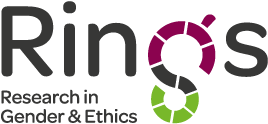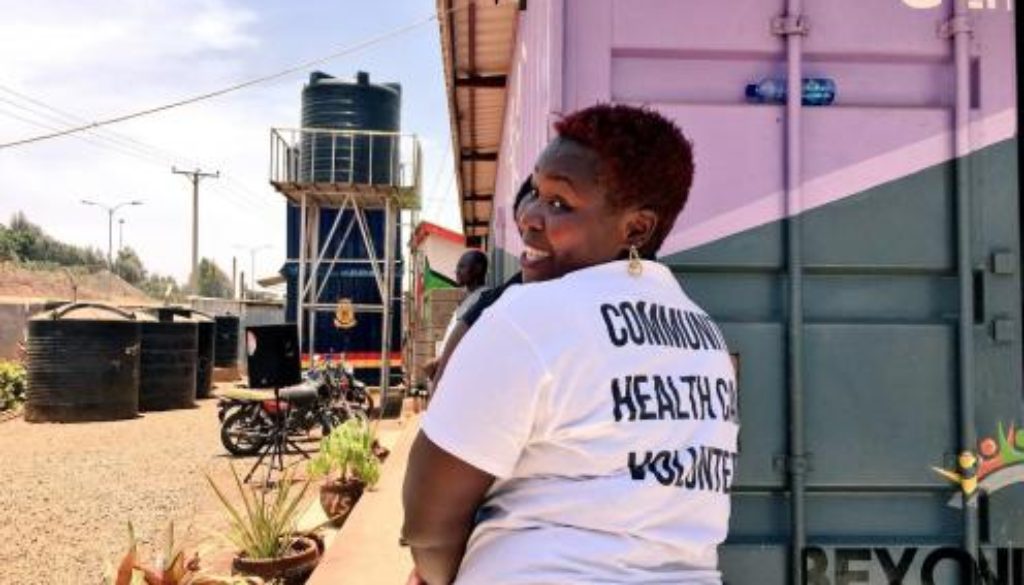How does gender impact the quality of community-level health data? Examples from rural and urban settings in Kenya
Community health workers labour at the frontline of the health system, yet there is little discussion of the ways in which their role is gendered. In this blog we explore how gender norms and relations effect the quality of data that community health workers collect.
Regeru Njoroge, Rosie Steege and Kate Hawkins
A key role of Community Health Volunteers (CHVs) in Kenya is to refer women and children to primary healthcare facilities for essential health services such as antenatal care, skilled delivery, postnatal care, immunization, and growth monitoring. As they carry out this role, CHVs collect data at community level in a tool designed by Kenya’s Ministry of Health – they are expected to report this data on a monthly basis. This should be a source of data provided at regular intervals that is used by policy- and decision-makers.
However, for data to be useful it needs to meet certain standards in terms of quality. Some of the most commonly referred to dimensions of data quality include accuracy, reliability, completeness, timeliness, integrity, and confidentiality. Numerous frameworks and tools exist to measure data quality, these often assess the hardware elements of community health programmes such as availability of data collection and reporting tools, training in data management, supervision systems, accountability and communication structures. They often neglect the software elementsof community health programmes that relate to the ideas, interests, relationships, power, values and norms of the health system actors.
There is an increasing body of literature (and here, and here) that documents how gender norms and relations impact on community health programmes; with many examples of how community health workers of a certain gender, may or may not be, accepted by the community that they serve. Still, the implications of gender on CHV performance have been less explored.
Gendered effects
Focus group discussions to explore data quality, conducted with CHVs in rural and urban sites in Kenya, as part of the five-year international REACHOUT research project, revealed direct impacts of gender on the quality of data reported by CHVs due to gendered barriers in data collection.
Particular health issues are seen as the domains of men or women: Both men and women CHVs felt that certain issues should only be discussed with either men or women. Because of this it is likely that the data that was collected would reflect a very gendered view of the health issue under discussion. For example:
“There are things that are associated with women – for example, if a woman is pregnant you know you can’t tell a man she should go to the clinic so you have to speak with the pregnant woman about her health status so that she can visualize what you are saying and if it’s something like latrine you know women are not the one who dig latrines- this is done by men. That is home affair and is something that a man should know.”(Male CHV at Museve Community Health Unit)
CHVs tend to collect data from women: Although men were consulted on issues like latrines, CHVs tend to interact more with women, and as such men’s perspectives may be missing from the data routinely reported. CHVS reported that frequently, men in households do not engage with CHVs because they do not see this as part of their roles as men:
“When they see you entering they say it’s a woman thing, even when you ask questions they call out to the women – ‘Mama please come there is a service provider here who is asking questions about what you know’, and they don’t want to know what you have brought and just put the burden on the Mama.” (Female CHV at Maili Saba Community Health Unit)
Men who are CHVs avoid discussing pregnancy with female community members: Kenya’s community health programme has a strong focus on maternal and child health. Yet many men CHVs in focus group discussions said that pregnancy is an uncomfortable and culturally inappropriate topic for them to directly address:
“You know since I’m a man it becomes a challenge when I find a woman who could be pregnant and I’m not the husband or her fellow woman, so it becomes difficult for me to ask things like if they are pregnant and this makes me approach another CHV and tell them of the visit that I made and that I did not find her in a good mood and when I asked whether she is okay she didn’t tell me and that’s when I get another CHV or the neighbor who can tell me that you know what, that woman is not okay and I’m told the situation causing the changes in the mood and they suspect that they are pregnant or maybe there is something that is disturbing her so we just wait- for men, when it comes to pregnant women, we just wait.”– Male CHV in Bangladesh Community Health Unit
Women CHVs have to be cautious when discussing sexual and reproductive health with male community members: Women CHVs also have challenges when it comes to issues of sexual and reproductive health – family planning was the most commonly mentioned challenging topic. They described how this was not always a topic that could be discussed openly in households between two women due to husbands’ disapproval:
“There are many young men who don’t want to hear about family planning and even when you tell them they disregard it, there was another one (woman) that was found and (the family planning) was thrown in the toilet, she went and bought others put in a paper and hid it and a rat ate it, they were discovered and thrown away with the husband saying: ‘I told you I don’t want those things’. You see this person is challenged and you cannot ask her about family planning in front of her husband- you have to meet in a corner and ask them.” (Female CHV at Bangladesh Community Health Unit)
Women CHVs struggle to visit households of men: Some CHVs felt that it was difficult for women to visit households of men, especially bachelors and especially at night, due to concerns around safety and negative impact on their reputation:
“You find most of them (CHVs) are women and the houses belong to men. You see now the women cannot go alone and they usually look for me to accompany them and if there is a man there he will see that there are two of us and that way the CHV is able to get the information that they want to know.” (Male CHV at Bangladesh Community Health Unit)
Men struggle to visit households: Young men reported facing difficulties in conducting household visits in that they are often treated with suspicion of having ulterior (possibly criminal) motives, due to their gender and age:
“Another challenge is for someone like me. You know how our area is – it is famous that all criminals come from here. So, when they see me come to their place to check on them…you will either hide your Bravia (television) or give me a stool to sit outside.” (Male CHV at Maili Saba Community Health Unit)
It is clear to see that the examples provided here impact immediately on dimensions of data quality such as accuracy, completeness, reliability and confidentiality. When CHVs are not able to openly discuss important health issues due to cultural or gendered norms, they are unable to fully assess the health status of their clients, which is reflected in the data collected. There is a need to explore and further establish the effects of gender on data collection and what this means for reporting, so that findings are incorporated in training and supervision of CHVs. Sensitization of communities to the role of CHVs is also important so CHVs are able to comfortably and effectively deliver the full set of services to all community members regardless of their gender, and collect the complete sets of data that they are expected to. With appropriate support, CHVs may be uniquely positioned to able to work together with their communities, both in rural and urban settings, to transform these harmful attitudes that prevent CHVs from fulfilling their roles.

